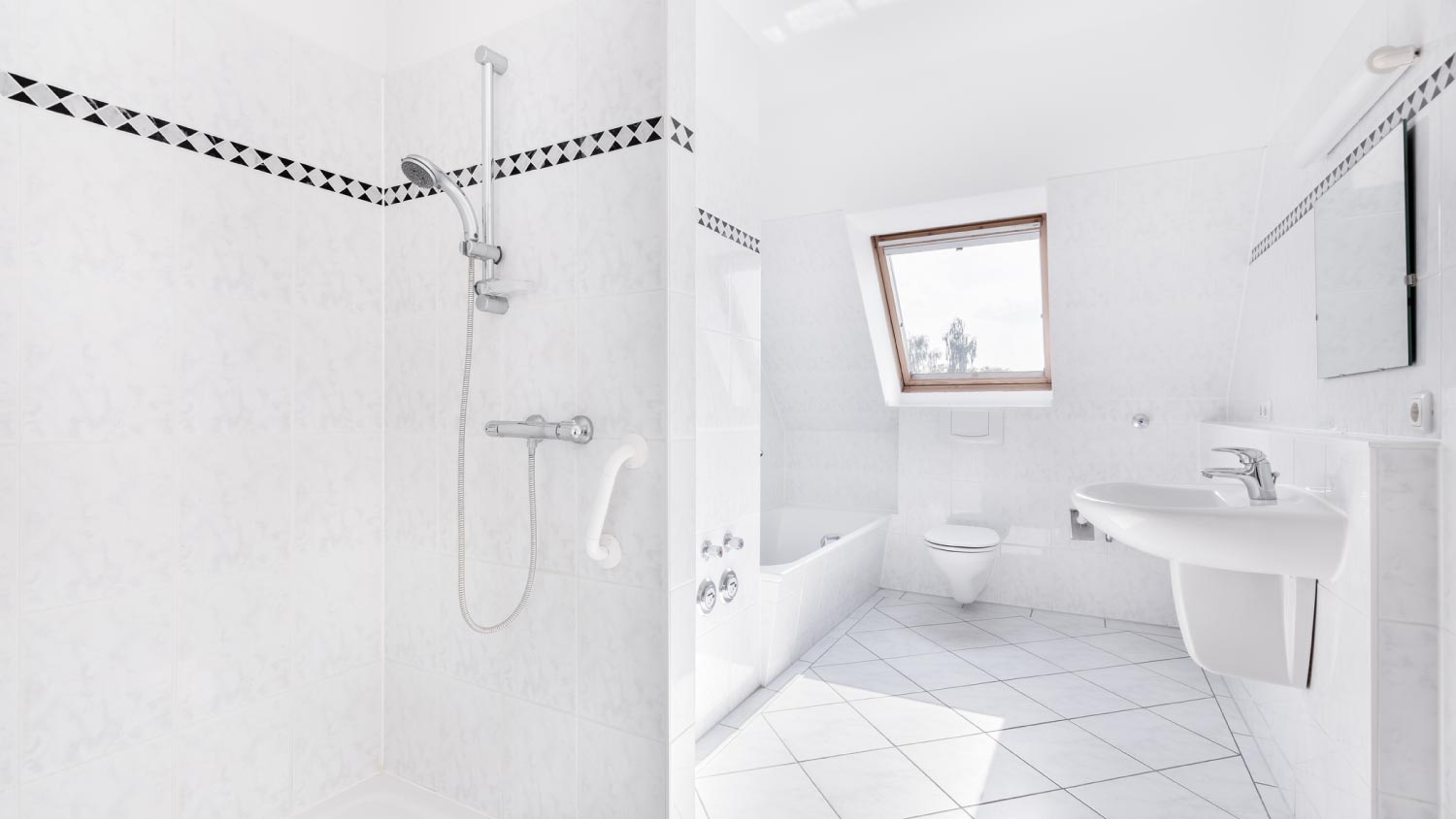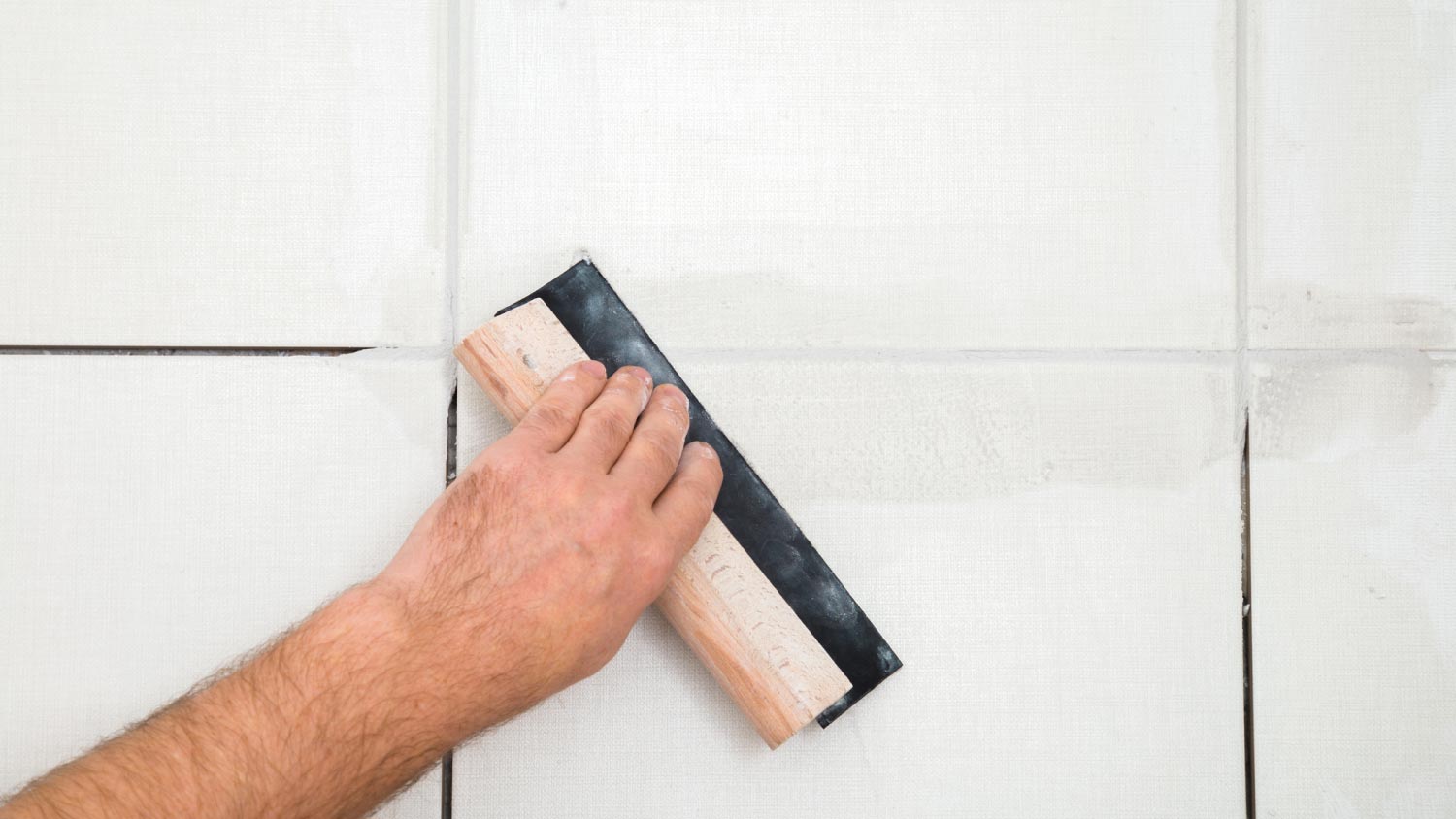9 Tips on How to Choose the Right Grout
You’ve grout to see these tips


When you decided to remodel your bathroom, you probably started by fixating on the bigger decisions, like the best bathtub style or the budget for your bathroom vanity. But even the small decisions can have a huge impact on your space, including choosing the right grout.
Grout is the cement mixture that holds masonry and tiles together, and you may have noticed that, in many bathrooms, it is everywhere. The gritty mix comes in a variety of colors and finishes, including the sandy textured version you will find around most homes, as well as an epoxy option. This can make picking the perfect grout a little overwhelming.
Keep from turning into a real Oscar the Grout-ch by following these tips when selecting grout for your next project.
1. Decide Between Premixed and Self-Mixed
You can purchase two different types of grout at most home improvement stores—premixed grout that is ready to go and a powder that you mix yourself.
The premixed stuff is a better option if you want to hit the ground running and get started as soon as you get back from the store; however, if you are going to mix grout as you work (which will make it easier for you to keep leftovers for future projects), the powdered stuff is the way to go.
2. Know Your Grout Colors Beforehand
There are several grout colors to choose from, and each has a different effect on home decor. Black and white are the most popular and common colors for grout, due to their versatility; however, you can select from a large range of colored grouts for various purposes, including brown, gray, and tan.
Just as grout can come premixed or self-mixed, you can also find pre-colored or tintable grout. If you have a dark-colored grout, a tint can darken the shade even further. Doing so helps create more dramatic contrasts between the grout and tile.
3. Opt for Matching Colors

Matching your grout to your tile (or getting as close to it as you can) will help make a space feel bigger. This design strategy is trickier to do if you are using tile with multiple colors or patterns. In that case, you should choose a grout color that matches the predominant color in your tile. Keeping the color as uniform as possible between the tile and the grout makes a major difference.
4. Highlight Your Tile’s Shape
While matching your grout to your tile is a good rule of thumb when making sure a space looks bigger, you should choose a contrasting color if you are trying to highlight a unique tile shape or pattern.
For example, if you are working with a herringbone-shaped tile, you might want to pick a color that contrasts with the tile so that it really makes the shape pop. In this case, you might consider pairing a white tile with dark gray grout so that the shape of the tile stands out.
5. Match Your Existing Grout
If you are updating the tile in a room where you already have tile and grout, you should try to stay as close as possible to the current grout color. This helps keep the room's flow intact and will make your tile look more like a well thought-out part of the design and less like a recently laid addition.
6. Opt for Presealed Grout

One of the most common grout gripes is how hard it can be to keep grout clean. The reason grout is so hard to keep looking like new is that it needs to be resealed once a year. The seal helps to keep dirt from building up and prevents stains from setting in. Choosing a presealed grout that does not need an annual touch-up will help keep your grout cleaner (and your back and your knees will thank you).
7. Get the Best Grit
You will need to decide whether to use sanded or unsanded grout in your project. The difference between the two may sound counterintuitive. Unsanded grout has a smoother feel, while sanded grout is coarser because unsanded grout is created without adding sand in the mix.
Luckily, each type is better for different circumstances, making the choice fairly obvious. Unsanded grout is best for filling thinner gaps, vertical layouts (like your kitchen backsplash), and more polished tiles. You can see sanded grout in larger gaps where you might otherwise worry about cracking.
8. Bring Your Tile Shopping
When you are hunting for the perfect shade of grout, you should bring your tile along for the ride. If you rely on a photo, you may end up missing some crucial undertones in the tile that you would be able to pick up on in person. As with matching (or contrasting) the color of the grout to the tile, you want to match the undertones as well. Opt for grout with cool undertones for cool tiles (like whites and grays) and warm undertones for warm-colored tiles (like earth tones and yellows).
9. Check the Display
If you bought your tile from a home improvement store with a few pieces on display, and you like what you see, consider matching your grout to the one they used. An employee should be able to help you find the coordinating color. You can also show a photo to your local bathroom remodeling contractor, and they will help you find a matching option.
Frequently Asked Questions
The grout shade you choose comes down to personal taste and preference. A darker grout will give you a more dramatic and noticeable contrast with the tile around it; however, lighter grout helps create a more uniform look when blending the colors together. Additionally, a darker grout combined with a patterned tile could be overwhelming to the eye, while lighter grout makes the pattern stand out as the main focus.
There are two main types of grout. Cement-based grout is relatively inexpensive and can hold together glass or polished stone tiles without fear of scratching, but it is prone to cracking. Cement-based grout is also porous, so it needs to be sealed, especially in areas with moisture.
Resin-based grouts are more flexible and can come in premixed buckets. Alternatively, you could use a two-part epoxy grout composed of two resins that you mix. This approach is less forgiving because they need to be mixed at the proper ratio and they set at varying speeds depending on the surrounding temperature.
Sanded grout contains particles of sand, making the grout more resistant to cracking. This durability makes sanded grout well suited for tile floors. It is also less prone to thinning out and forming bubbles when it cures, so you can spread it into larger joints.
Unsanded grout is much smoother, so you will want to use it when working with tile made from glass or polished stone. Any sand could leave scratches on the tile’s surface. The lack of sand also makes unsanded grout thinner, making it best for tile joints that are less than one-eighth-inch thick.





- How to Choose the Right Grout Color
- Here's What Causes Loose Grout—and How to Fix It
- How to Clean Floor Tile Grout: A Complete Guide
- How to Keep Your White Grout Clean: 7 Tips to Follow
- How to Remove Grout From Tile the Easy Way
- How to Soften Grout for Removal 5 Different Ways
- 3 Tips to Restore Your Grout to Its Original Color
- How to Change Grout Color
- How Long Does It Take for Grout to Dry?
- Sanded vs. Unsanded Grout: Which Is Right for Your Tiling Project?










